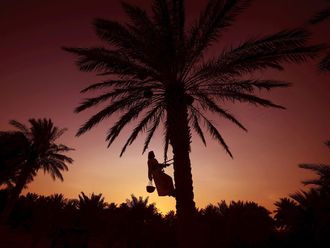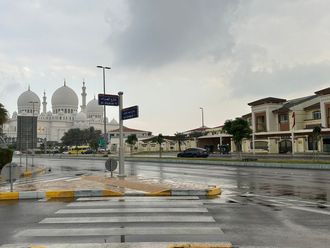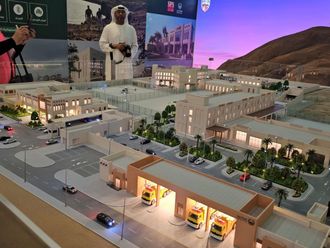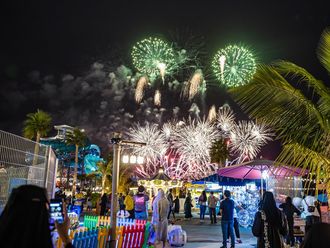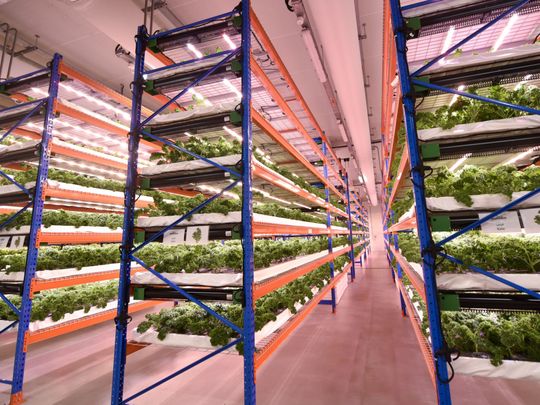
Dubai: By the end of this month, UAE residents will be able to savour ‘ready-to-eat’ greens produced at Bustanica, the world’s largest vertical farm recently opened by Emirates Crop One (ECO), it was announced on Tuesday.
While passengers of Emirates and almost 100 other airlines served by Emirates Flight Catering (EKFC) are the first to fork these crunchy leafy veggies in salads and garnishes offered onboard their flights, the greens - which do not require washing - will hit the local retail stores for general consumers by the end of August.
This was revealed by officials of Emirates Crop One, a joint venture between EKFC and Crop One, a US-based industry leader in technology-driven indoor vertical farming, during a media tour that provided a first look inside the innovative indoor farm.
Bustanica, means your garden or orchard in Arabic, said Robert Fellows, Production Director, Bustanica.
“The facility is designed to produce in excess of 1 million kilos a year. We are going to market with seven different cultivars (plants)—four lettuces and three non-lettuces - as well as airline products,” he told Gulf News during the tour.
Located near Dubai World Central – Al Maktoum International Airport, the massive hydroponic farm is spread across 330,000 square feet, spanning three floors. At full capacity, 1.1million cultivars (plants) can be grown vertically at any given time.
While ‘Healthy Kal’e, ‘Crunchy Romaine’ and Spinach contain each of the crops specified, ‘Power Blend’ and ‘Spring Mix’ are boxes that have mixed greens. The ready-to-eat products come with a “do not wash me” advisory.
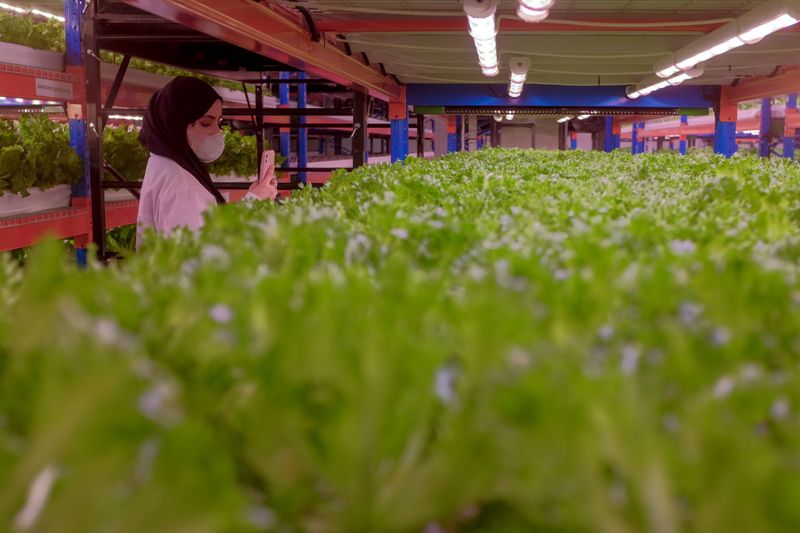
Ready-to-eat crops
Currently, the range includes kale, spinach, arugula and four varieties of lettuce – Romaine, Ruby Sky, Lalique and Batavia-Muir. The harvested greens are “beyond organic”, ready to eat and do not need pre-washing, said Fellows.
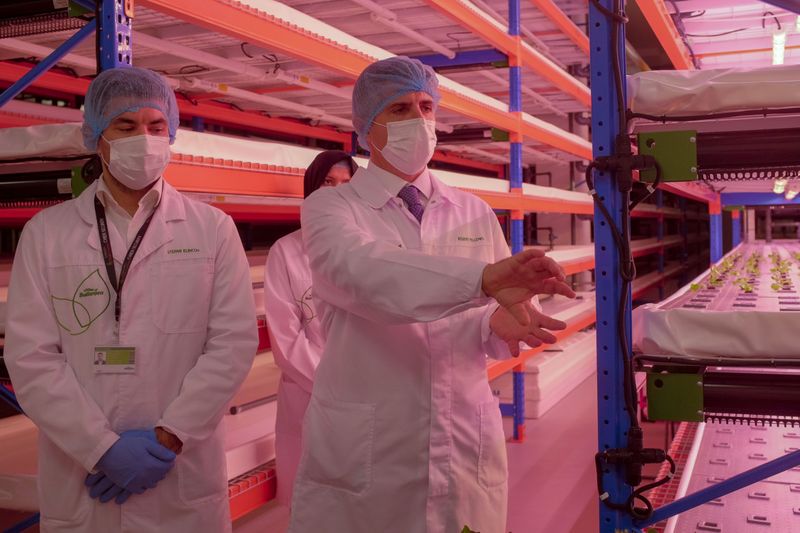
“They can be eaten straight out of the box. In fact, there are chances of contamination if you wash them,” he said, urging consumers not to wash the greens.
The products come with a ‘do not wash me’ advisory. The assurance of safety without washing comes from the fact that the greens are grown indoors using precision farming in a controlled environment that does not require pesticides and prevents contamination. Precision farming means each plant gets the optimal mix of nutrients.
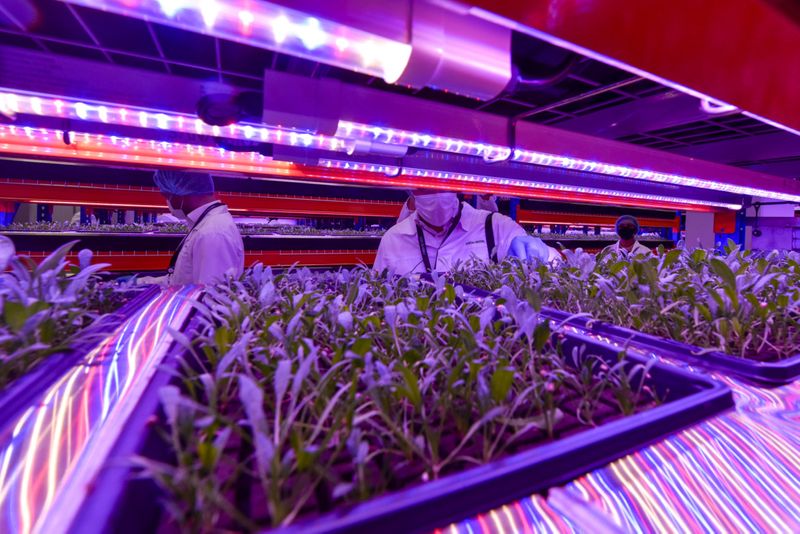
The risk of fungal and food-borne diseases is almost entirely eliminated as humidity levels are managed, and limited human contact with the produce removes the risk of contamination. There is minimum handling, with the main touch points happening while harvesting and packaging.
How water is preserved
Taking basic principles of hydroponics, the farm focuses on water security and supports the UAE’s Water Security Strategy 2036 agenda.
The facility can save 250 million litres of water every year compared to traditional outdoor farming. The hydroponic cultivation in the farm uses up to 95 per cent less water (15 litres for 1kg) than traditional outdoor farming (317 litres for 1kg), according to Aaron Moore, production manager, Bustanica.
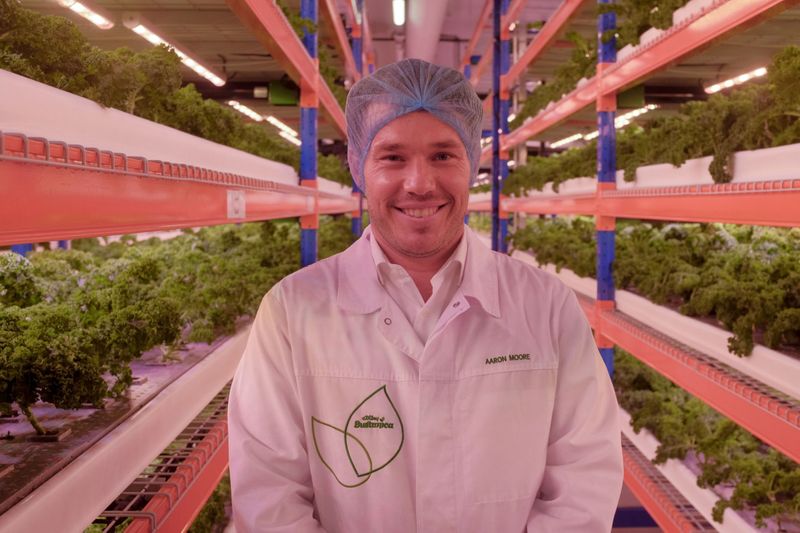
With vertical farming, plants are grown in an entirely controlled environment, said Moore. “Everything from the temperature, humidity, lighting, water, and nutrients are precisely monitored and controlled, maximising growth and yield, and virtually eliminating any risk of contamination.”
“The controlled agricultural environment we have here is definitely going to be the differentiator for us in the market. We use artificial intelligence and data for monitoring and controlling the entire farm. The ability to control every element allows us to produce the best quality products… taste and nutrition-wise. One of the other benefits for us is that our products are ready to eat from harvest,” added Moore.
Explaining more about the indoor facility, Patricia Hakim Massamiri, programme manager, Bustanica, said there are 27 rooms across the three floors.
“The Modular Growing Units (MGUs) are housed in these rooms. We have vestibules in between the MGUs to prevent the infiltration of any pathogen and to allow people to sanitise before entering the room,” she said.
Vertical farming techniques and innovative technologies used at the facility completely eliminate the use of pesticides, chemicals, herbicides, and fungicides.
How seeds are germinated
During the tour, the media persons were given white coats and hair nets before entering the plantlet development area, where the seeds are germinated by planting them on vertical racks.
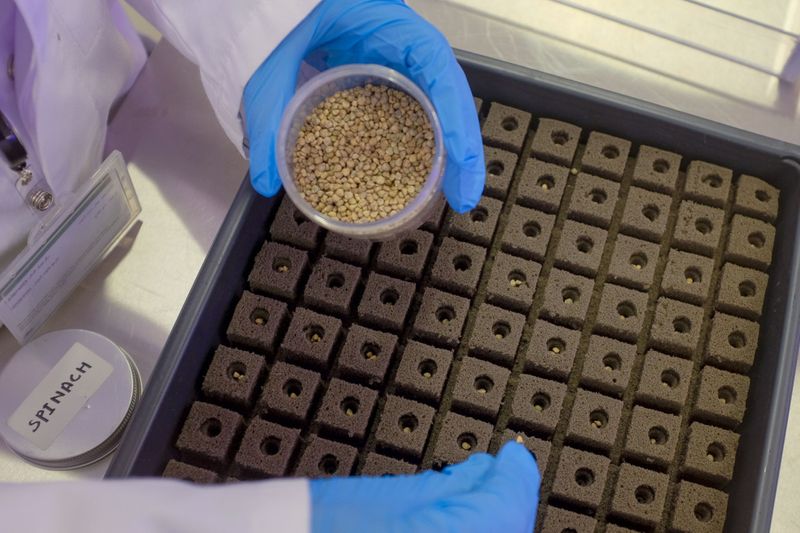
The first room in the area is called the Plant Development Unit (PDU) which is used for seed storage, sterilisation of the growing media and germination of the seeds etc.
Seeds are planted in a single-use substrate membrane that is biodegradable and inert (supply no nutritional value).
“The membrane has 162 cells. We process each of these sanitised membranes in an autoclave machine to doubly disinfect them before we plant the seeds. It kills any bacteria or pathogens that may be present,” said Fellows.
There are two forms of sowing. A vacuum seed process is used if it is a pelleted seed. Smaller, non-pelleted seeds are hand-sown. “Generally, non-lettuces are hand-sown and lettuce tribes go through vacuum seed process,” said Fellows.
The seeds sown on the growing media trays are then placed in vertical racks.
Transplanting plantlets
In two weeks, roots develop and then the plantlets get transplanted into bigger float boards placed above treated water in the Modular Growing Units (MGU). This is where the plants grow to their maximum capacity.
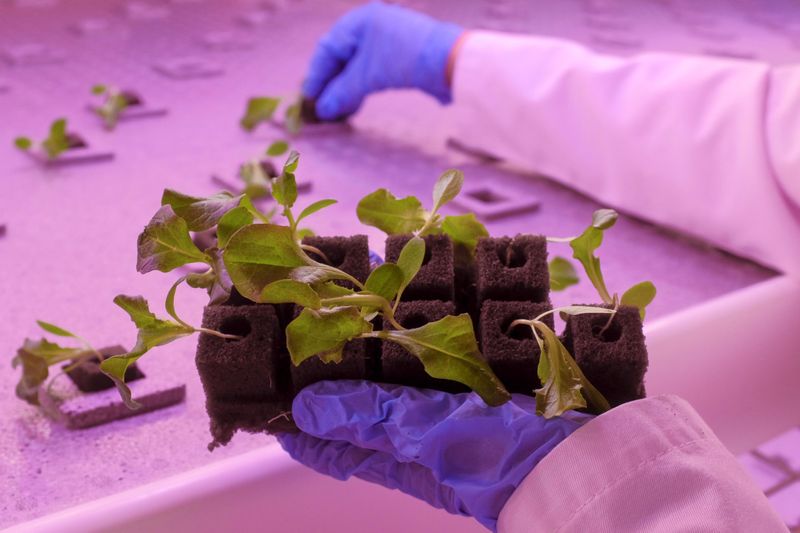
“The water is first filtered and purified. Then it is treated with a precisely calculated mix of plant-specific nutrients such as nitrogen, phosphorus and calcium and then delivered to the roots of the plants to encourage peak nutritional development,” Moore explained.
Automated dosing units are used for adding the nutrients required in the water. The roots sitting directly inside water absorb only the water that is required.
“Anything that it doesn’t want to absorb remains and is recycled within the system,” said Moore.
Different LED lights are used in PDUs and MGUs. “In MGUs, they are tailored specifically for the indoor crops. A pinky red hue has been added for this purpose,” explained Moore. Lighting is adjusted in day-mode and night-mode as well.
The facility also has the technology to automatically dehumidify any perspiration from the plants. “It is important to control the humidity and temperature. Otherwise, when the plants get larger and it is time for harvest the plant quality will diminish. Any perspiration that is captured is treated and used again in the system. That is how we reuse and recycle that water,” said Moore.
Multiple harvests
In less than two weeks after the transplant, the roots continue to grow and the leaves become bigger and allows multiple harvests.
“Once the roots are established, the plant will grow quicker and quicker. That allows us to reduce the time from first to second and second to third harvest, allowing us to get the optimal yield from each product and maintain quality,” said Moore.
To maintain the quality, harvesting each plant has been limited to three times. Countless harvests have already been done for multiple tests and other preparations for the market launch.
Grown under the controlled environment, Fellows said, the Bustanica products will last longer compared to the traditional products. “We can guarantee that our products remain in the fridge for two or three weeks in perfect quality.”
Independent of weather conditions and attacks by pests or fungus, he said the farm offering reduced harvest times supports the UAE’s National Food Strategy 2051 agenda with reliable year-round crop production and stable supply chain.



